Experimenting with motif via printmaking, part of the design process of my Conversation Pieces collection.
Making and meaning
There is often a conceptual idea at the root of my designs—rather than purely visual inspiration—which allows my knitwear to tell unexpected stories.
This artistic approach to design is a journey from abstract ideas to finished, wearable garments.
The piece of grit
At the very beginning of my design process there is a seed of inspiration. This is almost always conceptual. It is through thinking about a subject, rather than looking at something, that I usually begin my designing.

The Partition of India in 1947 affected members of my family, turning them into refugees overnight. Thinking about this led me to explore the concept of borders.
Perhaps, rather than a seed, it’s actually a piece of grit. My starting point is often something that I perceive as an injustice—or is a topic that vexes me. Maybe this is the lawyer in me: I spent nearly twenty years as a criminal defence solicitor in the north of Scotland.
These pieces of grit are often areas of conflict: current, or historical. As I grow older, I find myself starting to reflect more on personal issues that have affected me, or my family. I now even permit myself to wallow in subjectivity (something I was trained to avoid, as a lawyer)!
The piece of grit gradually turns into a concept worth digging into further.

While thinking about the man-made border of Indian Partition, in counterpoint I looked at natural borders in Shetland—such as the stones at the shoreline. My Ebb-stanes collection emerged from examining these two types of frontier.
Research
Reading around the subject, I look at work by other artists—but crucially not those who work in my media, so not in knit or glass!
This is a very free stage. I am likely to go way off topic, sitting and thinking in my red chair, mostly after the end of the ‘working day’(and usually with a gin in hand). When things get serious, sometimes I move onto a desktop computer…
Creating my own visual inspiration
In order to translate these abstract ideas into something that could become a knitwear collection, I need to generate imagery or physical material.

Printmaking during the process of designing my Conversation Pieces collection.
Sometimes I begin by making marks using a range of materials, but I seldom include knit at this stage: the final outcome is still to be determined.
Being a maker who also works in glass and printmaking, such an open process suits me as it is applicable to any medium.
From intangible to tangible
Frequently I connect my initial concept with an object, which symbolises what I am trying to say. An object provides the visual inspiration needed for a textile design (or some other outcome) and I'll use varied materials in response to it.

Incised stones from the Ness of Brodgar, Orkney. These stones and their markings began to symbolise deep time. These objects were part of the beginning of my Inklines collection.
My ‘little makings’ made at this point might be rubbings, castings, prints, digitally manipulated photography…I might even make drawings (last resort!).
This goes back and forward in an iterative process, between phases of research, thinking and making until I’ve got something that can take a fuller form.

After several stages of little makings I might have visual material with a motif that could be used in a knitwear collection. The workings shown here are from my Inklines collection.
This is a ‘making and meaning’ process which I have adapted and refined since studying textiles.
Choosing materials
Somewhere in the midst of all this, I do start thinking about materials for the final piece. Should this go into glass, rather than knitwear?

The idea of home is the concept at the root of my Rani collection, and therefore it was most fitting for this idea to find its form in a collection of enveloping knitwear. Afterall, Shetland is my home—and knitting is what brought me here.
Practicalities of course play a part: there is always something going on, in a small business, that can disrupt designing! It’s not all dreamworld, as much as I would love it to be.
I gather my bits and prepare to see the knit technician.
Fabric before garment
Designing the knitted fabric comes before designing the garment shape. That is not to say that the garment shapes are less important – they too are designed with reference to the original concepts.
My overriding quest is that the fabric is original. By following my own design path, it should be.

Experimenting with a motif begun as a monoprint, and translated into a knit swatch.
The technical questions begin
How will the fabric be constructed? How many colours (how will that work with the knitting machine systems)? Weight of fabric? Will it be difficult or expensive to produce? Single or double bed fabric? Fashioning (shaping)? Intarsia? Lace? Multi-coloured jacquard? What kind of tension? What about edges? Does the pattern need to go right to the end of an imagined sleeve?
Everything is give and take, always. Every decision has a consequence. All this is part of the design process, affecting costs and therefore design decisions.
Although it might sound a bit overwhelming, I really do like the technical bits of knitting.

Colour swatches for the Conversation Pieces collection: I eventually chose two colourways to go into production.
Swatching and prootyping
I work with a technician to make swatches of the fabric. I’ll play with scale, colour, knit types, yarns, tensions…
A benefit of manufacturing here in Shetland is that I can walk over the road, or hop in the car, and within minutes be having a face to face discussion—and experimenting—with the skilled craftspeople that are part of my manufacturing process.

Prototyping the Rani collection with the technician.
Constructing the garment
My interest in traditional forms of dress frequently influences the shapes of my garments. Across cultures, often the simplest pieces of clothing have at their root a large and rectangular piece of cloth.

My grandmother, who wore a sari every day.
By adding a rectangular piece of fabric to a square piece, I can have the beginnings of a jacket. The square creates the back, with sleeves then being added to the body.

Rigg Vaarie jacket: complex textile construction within simple shapes.
Of course, the design of the textile itself and its drape—and the form of the wearer—obscures the fact that garments might be constructed from such simple shapes.

The jacket shown here, Vaarie (one of my earliest designs), can also be worn ‘upside down’. Versatility is a marker of many of my designs, giving the individual wearer scope to style a garment in different, personal ways.

Post-making
The naming of a collection most often comes after seeing pieces knitted and linked, to become wearable garments.
Reflections at this stage have become part of my design process. Almost like a piece of art, reflection becomes part of its evolution. New observations are made, which then become an inherent part of that story.
The finished piece
At this point my piece of grit has travelled through many processes, and over conceptual and technical hurdles, to become something that a customer can try on, or browse online (and hopefully like enough to buy!).
Designer vs wearer
For all my desire to imbue my work with meaning, each wearer can perceive something quite different. Nielanell knitwear seems to invite comparison with painting, seascape and landscape, and to trigger memories and the imagination.
This input is exciting, becoming part of the narrative of the piece. The design story continues on from where I began, stretching into the future of the garment.
Each wearer adds new layers of meaning.
The wearer brings my design to life; the wearer is why I design.

Deborah collects her Inklines jacket from the studio in 2020.
Afterword
Knowing my materials
The knowledge I have gleaned from my activities as a keen hand-spinner and dyer (I also sell ranges of luxurious hand-spun yarn) has given me a deeper understanding of yarn. Fibre type, dye technique, spinning method—all these separate components influence shape, drape, and final qualities of the knitwear.
Sustainable practice takes many forms. I have a strong belief in supporting rural sustainability—both in economic terms, and as a part of a small but strong, vibrant community. I enjoy selecting the most appropriate yarn, which will last well, and it is gratifying to see the serious efforts made to ensure that yarn is spun with sustainable practice.

Good design is just as much about function as anything else. I work with many types and weights of yarn, although I usually find that worsted spun yarns with finer, drapier qualities are the better fit for my knitwear.
Contemporary design and Shetland tradition
Shetland naturally has some of the most talented designers and knitters of Fair Isle knitting in the world—and indeed we have the most exquisite lace knitters.
I am so humbled by their heritage and skills, I feel I could never begin to emulate these types of design.
Shetland is embedded in my work—albeit not always in a very literal or obvious way. I try to capture ethereal qualities of Shetland such as integrity, exploration, freedom and resilience. Combined with the incredible culture of knitting in the islands, these ideas intertwine with my other concepts to form a kind of blueprint.

